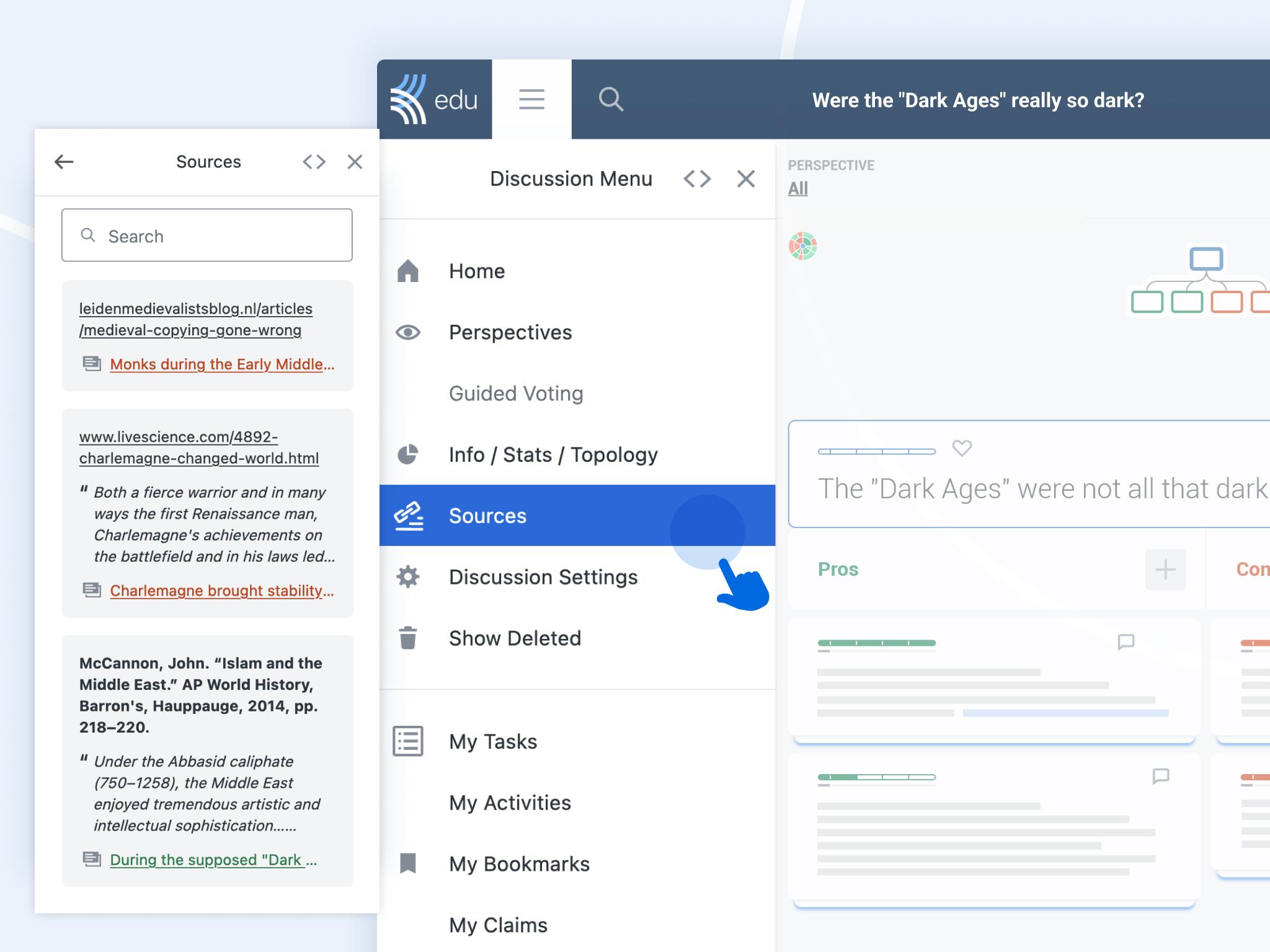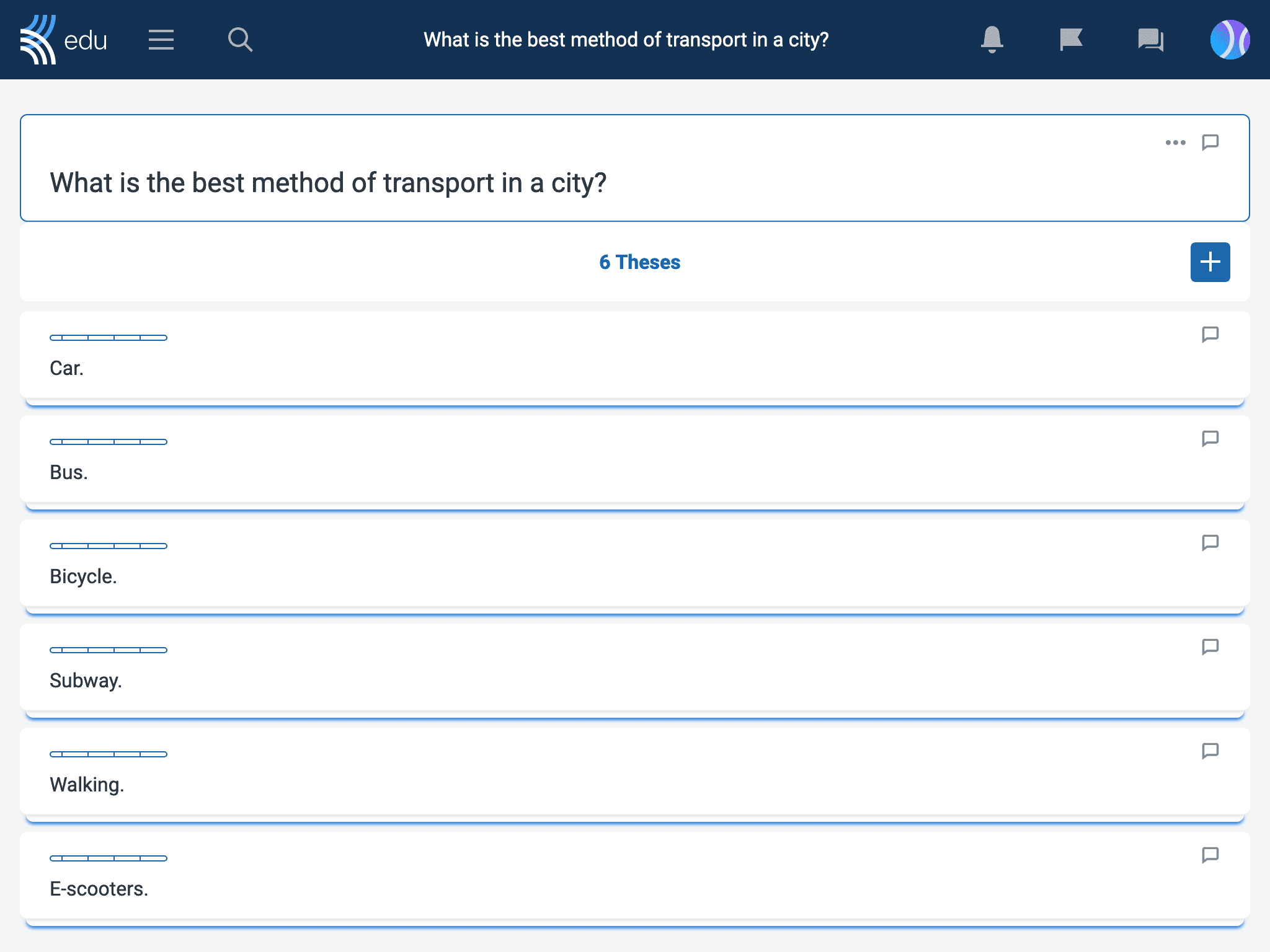“When will we ever actually use this?” You might hear this question from students more often than you’d like, and it can put a real damper on your well-crafted lessons. While you may feel understandably exasperated by this refrain, this is also an opportunity to discuss current events in the classroom!
One of the main reasons that students ask this is because they feel a disconnect between the curriculum and their personal experiences. By integrating current events topics into the classroom, you can bridge that gap and boost engagement with content that is relevant to students’ lives.
However, current events can also be heated, thorny topics, with evolving sets of facts that invite many interpretations. We hope that our recommendations for strategies and activities will help you be more confident in tackling these topics with your students, and find options to do so on Kialo!
Strategies and tips for teaching current events to students

1. Provide guidance and support
As today’s news can hit a little closer to home than ancient history, this can be a welcome change of pace from strictly academic content that can seem abstract to students. Linking curricular content to more personally relevant current events is an excellent way of increasing student engagement, as it helps students to understand the connection between what they learn in school and what’s happening in the world.
Sometimes you don’t need to do too much to get students invested in current events. It may be that they come to class with some news already on their minds, as it could be a topic they hear being discussed at home or with their peers. Ensure to monitor these conversations closely, and provide appropriate context and a guided space for students to explore their ideas and opinions.
However, heavy or upsetting news events can take a toll on students’ emotional well-being. More than providing a space for students to discuss their thoughts, recognize that this could be an opportunity to incorporate a moment of social-emotional learning. As such, allow students to process their feelings and take some ownership of the news, so they don’t feel just like a powerless bystander.
2. Lean on information literacy skills
With our present landscape of being able to instantly access all types of news and narratives, it can be challenging for students to recognize reliable sources without support. Thus, teaching current events naturally lends itself to teaching information literacy skills. Any time you bring the news into your classroom is a don’t-miss opportunity to teach students about finding, evaluating, applying, and citing sources.
Another worthwhile skill that students learn through information literacy is the ability to engage with multiple perspectives on an issue. This helps students understand how people can draw different conclusions from the same set of facts and distinguish fact from opinion.
As it stands, Kialo has some built-in features to help your students analyze and compare sources. You might begin by choosing two or more sources that cover the same story from different perspectives. Then, task students to identify and break down their main arguments and supporting evidence in a Kialo discussion.

After students identify these arguments, have them analyze their validity — seeing if the arguments stem from facts, opinions, or opinions backed up by facts. Note that this activity works best when using at least one source that has a detectable bias.
3. Start with discussion, not debate

While formal debate can be a worthwhile exercise in logical argumentation and in demonstrating knowledge, it is not as well suited to an initial exploration of current events. Because debates with assigned sides are inherently competitive, they can give students “tunnel vision,” where they shut out any perspectives that don’t support their side. This could be a missed opportunity for students to examine many sides of an argument.
Conversely, open discussion — where students can move freely between positions — helps students to approach current events with more curiosity and humility as they sift through multiple points of view.
In cases where the issue is particularly controversial, or where some students would be in a clear minority, you might consider using an Anonymous Discussion in Kialo to take off some of the pressure. You might also explore our Multi-Thesis debates — giving students more than one possible option to agree or disagree over!

4. Cultivate respect and civility
Even if debate is not the focus of the activity, students will probably still want to share their personal opinions on current events. These differences of opinion provide a valuable opportunity to cultivate respect and civility among your students. Provide a space for students to hear one another out, and in the likely event of disagreement, insist that they focus on critiquing ideas rather than people.
At Kialo, our mission is to provide a space to encourage this kind of discourse, where students can practice disagreeing rationally. Rather than having students navigate into the open chaos that is emblematic of many online or digital spaces, you can easily monitor and facilitate a classroom debate using our features built specifically for educators.
5. Continue student engagement with a follow-up activity
You can also use Kialo for a follow-up debate activity, after students have had time to freely explore a current events topic. If you need some inspiration on a debate topic, head over to our Topic Library and select “Civics & Society” from the category drop-down menu. You’ll find debates on topics like climate change, immigration, and cryptocurrency. These topical, relevant debates are sure to get students’ critical thinking skills going!
We hope that the strategies and activities we’ve listed above will prove to be helpful in your teaching arsenal. There are so many different ways that you can add a slice of current events into the classroom.
No matter what method or activity you choose to do with your students, we hope that this helps them on their journey to be engaged learners and critical thinkers! Let us know how you’ve incorporated using Kialo on our social media pages, or directly at feedback@kialo-edu.com.

